
Refresh your vision with intraocular lens surgery Melbourne
Cataracts or not, there are clearer days ahead with premium intraocular lenses (IOLs). We can restore reliable vision for suitable patients, whether it’s for cataracts or you’re looking for a laser surgery alternative that suits life after 45.
Are you a candidate? Let’s find out.
We’re talking what they are, how they work and whether a cataract procedure or a clear lens exchange could be right for you.
IOLs are artificial lenses that replace your eye’s natural lens to restore clear vision. They’re commonly used in cataract surgery, where they replace the cloudy lens. But even without cataracts, you may still benefit from artificial lenses.
If you’re over 45 and rely on reading glasses or have trouble with near or distance vision, a refractive lens exchange could be a great option. Also known as clear lens exchange, it uses the same proven technique as cataract surgery to correct your vision, with the added benefit of preventing cataracts down the track.
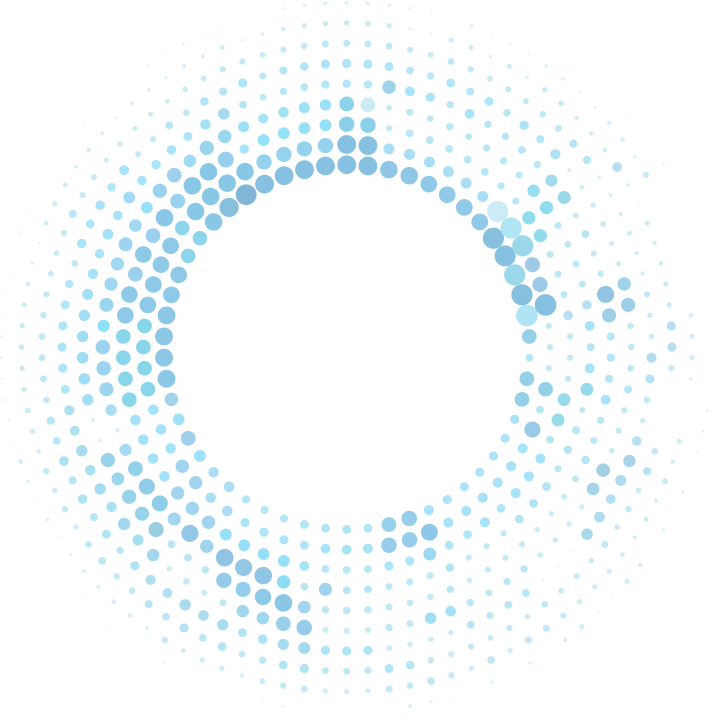
Benefits
Long-term clarity for both near and distance vision.
A short day procedure with rapid healing.
Stay ahead of cataracts with one smart solution.
Disclaimer: It’s important to note that not everyone is suitable for vision correction treatment, and every patient’s journey is a little bit different. Healing responses are unique, and results and benefits may vary. As with any surgery, there are risks of which you’ll be fully informed before any decisions are made. Every claim about safety, effectiveness or precision is backed by published peer-reviewed research. See full study references on our Clinical Evidence page.
See more

Suitability
If you have cataracts or you’re seeking a laser surgery alternative, you may be suitable for cataract surgery or a refractive lens exchange. In many cases, we can provide long-term visual satisfaction for patients who are:
Sounds like me!
Tech talk
An IOL is an artificial lens that permanently replaces your eye’s natural lens, restoring clear vision where cataracts or refractive errors have caused blur.
To get the best results, we match you with a lens tailored to your anatomy and visual goals.
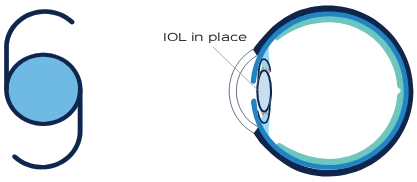
We use the IOLMaster 700 to capture precise measurements of your eye’s length, corneal shape and natural lens position.
These measurements guide the design of your replacement lens, matched to correct any myopia, hyperopia, astigmatism, and in some cases, reading vision too.


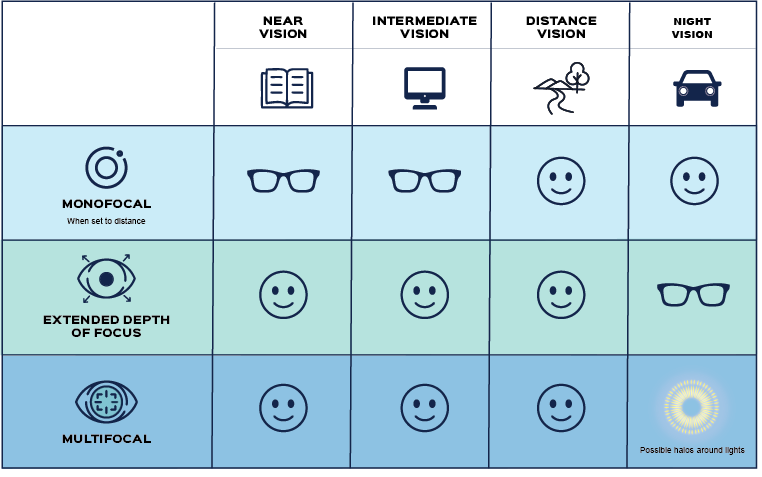
Each artificial lens type is designed to suit different vision needs, personal preferences and lifestyles.

Provide sharp vision for a single distance, either near or far. If you choose to correct distance vision, you may still need glasses for reading or other near tasks.
Offer clearer vision across a wider range. They’re a great way to reduce your dependence on glasses for most tasks, if you’re open to mild monovision.
Provide clear vision at near, intermediate and far distances. Halos around bright lights at night are common but typically settle and are well tolerated by most patients.
Choosing the right lens is a crucial step and a collaborative decision. We’ll walk you through the options so you can make a confident, informed choice.
We’ll consider your lifestyle and vision preferences and talk you through the ins and outs of each solution. Then together, we’ll select the best IOL type for you.


Cataract surgery and clear lens exchange are day surgeries with most patients in and out of hospital in under two hours. Treatment time is 15 minutes.
We use a sedative and local anaesthetic eye drops to keep you comfortable.
We make a 2-3mm self-sealing incision in your cornea.
Your natural lens is gently broken up using ultrasound technology and then removed.
Your new lens is carefully injected and manipulated into place.
A protective shield is applied to keep your eye safe. We typically treat each eye a week apart, though some patients may be eligible for a same-day bilateral sequential lens exchange.
Visual recovery is almost immediate and continues to improve over the next few days. If you receive multifocal or extended depth of focus lenses, your brain may need a little longer to adjust. This is called neural adaptation, and it happens naturally as your eyes settle.
You’ll be given clear post-operative instructions, including eye drops to prevent infection and support the healing process. Most patients can return to work within a few days.
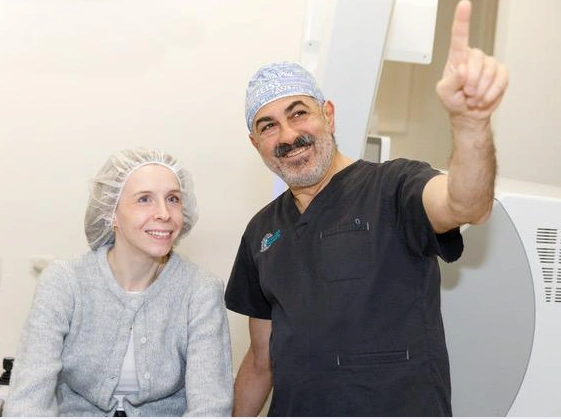
Just like any surgical procedure, cataract surgery and refractive lens exchange can cause side effects and carry some risks. At your initial appointment, we’ll walk you through everything step-by-step and make sure you have all the information you need to feel confident about your decision.
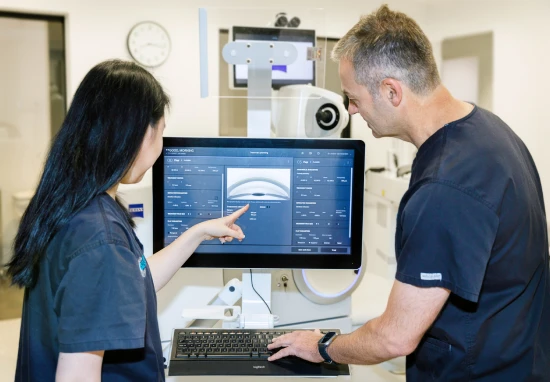
Pricing
Investment in cataract surgery or refractive lens exchange is approximately $4500 per eye (depending on which intraocular lens you choose). This includes:
Your hospital fee and anaesthetist fee
Your custom-made premium intraocular lenses
Your surgery in Day Surgery Centre
Follow-up visits at 1 day, 1 week and 1 month.
Medicare typically helps cover part of your cataract surgery, including a portion of the surgeon’s fee and standard lenses. Refractive lens exchange, on the other hand, isn’t usually covered, as it’s considered an elective vision correction procedure rather than a medical necessity.
If you have private health insurance, you may be eligible for additional cover on both cataract surgery and refractive lens exchange, but it all depends on your policy.
Not sure what you’re covered for? We’re happy to walk you through it and help you ask your provider the right questions.